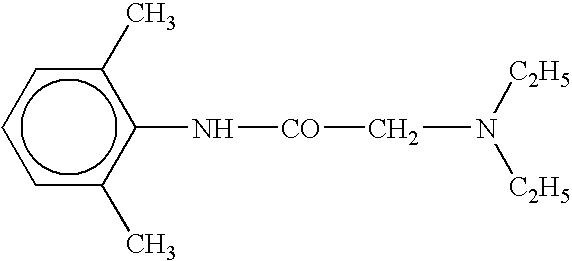Method for treating non-neuropathic pain
a non-neuropathic pain and non-neuropathic pain technology, applied in the field of non-neuropathic pain treatment methods, can solve the problems of non-neuropathic pain, less well-known non-neuropathic pain, and chronic neuropathic pain, etc., and achieve the effect of preventing injury to tendons, ligaments, muscles and/or muscles
- Summary
- Abstract
- Description
- Claims
- Application Information
AI Technical Summary
Benefits of technology
Problems solved by technology
Method used
Image
Examples
case 1
[0036] Case 1
[0037] An 89 year old female was suffering with severe osteoarthritis pain of her knees. She was being treated with chronic corticosteroids (oral prednisone) for over 5 years. Initially, the steroids provided good pain relief but the pain gradually had returned over the immediate past year. Nonsteroidal anti-inflammatory drugs were contraindicated due to her prior history of ulcers and the concomitant use of oral corticosteroids. She agreed to a trial of topical lidocaine patch, one patch placed over each knee for 12 hours application per day. After 1 week of treatment, she reported good pain relief in the arthritic knees and no side effects. She stated there was no “numbness” or change of sensation felt under the lidocaine patch.
case 2
[0038] Case 2
[0039] A 59 year old woman with rheumatoid arthritis affecting the elbow. She experiences intermittent severe pain that requires medication. She would rather not take anti-inflammatory medication due to side-effects. She was given lidocaine patch to apply to her painful elbow during these severe pain episodes. She reports a lot of pain relief with no side effects nor skin sensation changes when she applies topical lidocaine patch directly to the arthritic elbow for 24 hours.
[0040] Post-Operative Soft Tissue Pain:
[0041] A 46-year old male had undergone a surgical repair of a ruptured Achilles tendon. Following 6 weeks in a cast, he experienced moderate to moderately severe pain associated with movement of the surgically repaired Achilles tendon, especially associated with walking and later in the day after nonstrenuous daily activity. In the evening, he applied one patch directly to the skin overlying the Achilles tendon. Within 30-45 minutes he began to experience pai...
PUM
| Property | Measurement | Unit |
|---|---|---|
| size | aaaaa | aaaaa |
| pH | aaaaa | aaaaa |
| affinity | aaaaa | aaaaa |
Abstract
Description
Claims
Application Information
 Login to View More
Login to View More - R&D
- Intellectual Property
- Life Sciences
- Materials
- Tech Scout
- Unparalleled Data Quality
- Higher Quality Content
- 60% Fewer Hallucinations
Browse by: Latest US Patents, China's latest patents, Technical Efficacy Thesaurus, Application Domain, Technology Topic, Popular Technical Reports.
© 2025 PatSnap. All rights reserved.Legal|Privacy policy|Modern Slavery Act Transparency Statement|Sitemap|About US| Contact US: help@patsnap.com

